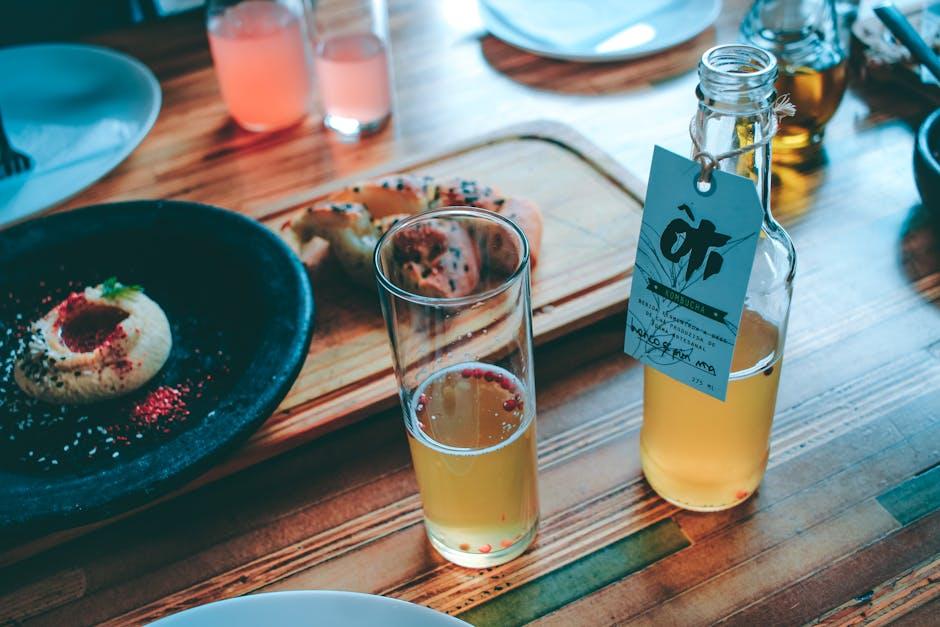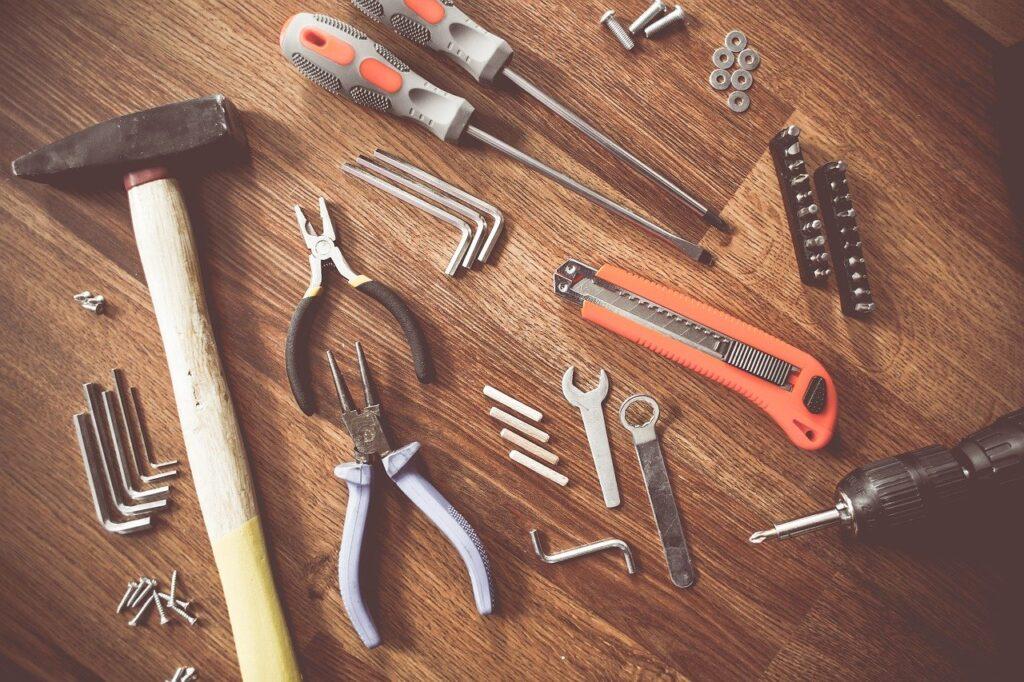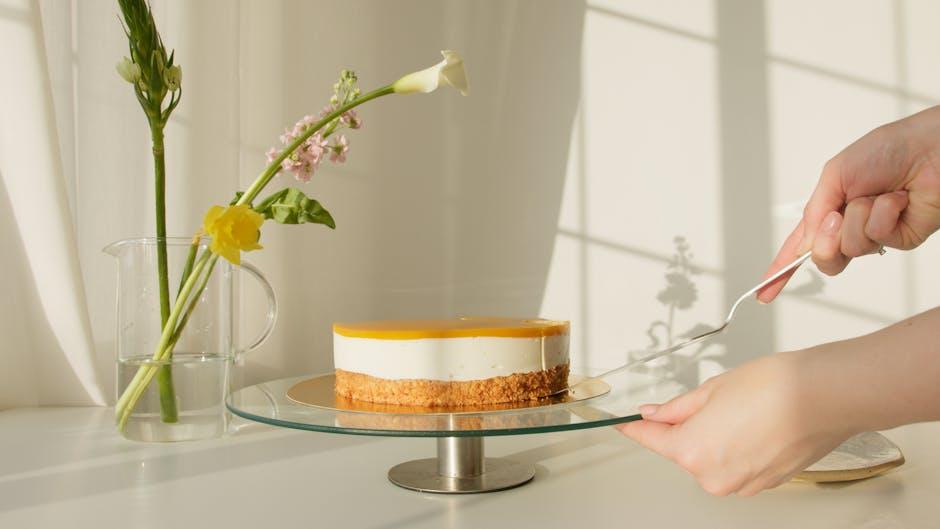Table of Contents
- Exploring the Essential Kombucha Equipment for Beginners
- The Role of Fermentation Vessels in Crafting Perfect Kombucha
- Tools for Flavoring and Second Fermentation Techniques
- Maintaining Quality: Cleaning and Sanitizing Your Kombucha Gear
- Must-Have Accessories for the Ultimate Home Brewing Experience
- Q&A
- The Way Forward


Exploring the Essential Kombucha Equipment for Beginners
When diving into the world of kombucha brewing, having the right equipment can significantly enhance your experience. At its core, the process requires a few basic items that cater to both functionality and fermentation. First and foremost, you’ll need a quality fermentation vessel. Glass jars, typically around 1 to 2 gallons, are ideal as they allow you to monitor your brew while preventing any unwanted chemical reactions that could occur with plastic. It’s important to ensure that your jars are wide enough to accommodate the SCOBY and have a breathable cover, such as a cheesecloth or a coffee filter, to keep out contaminants while allowing air circulation.
Another essential component is the SCOBY (Symbiotic Culture Of Bacteria and Yeast), which is the magic ingredient that transforms sweetened tea into delicious kombucha. When starting your journey, consider sourcing a healthy SCOBY from a reputable supplier or a local kombucha expert. Alongside the SCOBY, you’ll want to stock up on high-quality tea (black or green), sugar, and filtered water—each playing a vital role in the fermentation process. investing in a pH meter can be helpful for beginners who want to monitor the acidity of their kombucha, ensuring it’s safe and flavorful. Your setup may also benefit from a thermometer to maintain optimal fermentation temperatures.
To simplify the brewing process and ensure consistency, consider these additional tools:
- Measuring cups and spoons: For precise ingredient ratios.
- Bottling equipment: Including glass bottles with flip-top lids for secondary fermentation.
- Labels: Useful for tracking the date and flavor variations of your brews.
- Stirring utensils: Non-metal options like wooden or bamboo spoons are preferred to avoid negatively affecting the SCOBY.
| Item | Purpose |
|---|---|
| Fermentation Vessel | Holds the tea mixture and SCOBY |
| SCOBY | Ferments the sweetened tea |
| pH Meter | Monitors acidity for safety |
| Bottles | Houses finished kombucha for storage |
By equipping yourself with these fundamental tools, you’ll be well on your way to brewing a batch of kombucha that satisfies your palate and reflects your personal taste. Embrace the creativity that comes with flavor experimentation, and remember that each brew will teach you something new about this delightful beverage.
The Role of Fermentation Vessels in Crafting Perfect Kombucha
When it comes to crafting the perfect kombucha, the choice of fermentation vessel is critical. The vessel you select not only influences the fermentation process but also impacts the flavor, clarity, and overall quality of your brew. Traditional glass jars are popular due to their inert properties, allowing the kombucha to develop without introducing any unwanted chemicals or reactions. However, food-grade plastic and ceramic vessels are also suitable, each bringing unique advantages to the fermentation journey.
The size of your fermentation vessel is another important consideration. Depending on your brewing goals, you may prefer smaller vessels for batch brewing or larger containers for continuous brewing. Here are some common types of fermentation vessels used in kombucha brewing:
- Glass Jar: Clear visibility of fermentation process and simple to clean.
- Plastic Brew Container: Lightweight and durable but must be food-grade quality.
- Ceramic Fermenter: Aesthetically pleasing and promotes a stable fermentation temperature.
It’s also essential to account for features that enhance the fermentation experience. A spigot can be a great addition, allowing for easy sampling without disturbing the scoby. Moreover, a wide mouth on the vessel facilitates easy access for cleaning and adding ingredients. Below is a table comparing key features of popular fermentation vessels:
| Vessel Type | Visibility | Ease of Cleaning | Temperature Control |
|---|---|---|---|
| Glass Jar | Excellent | Easy | Moderate |
| Plastic Container | Poor | Moderate | Good |
| Ceramic Fermenter | Fair | Moderate | Excellent |
Ultimately, the right fermentation vessel aligns with your personal brewing style and desired outcomes. Taking the time to choose the right material and size will help ensure that each batch of kombucha is not just good but exceptional. Remember to consider factors like sanitization and temperature stability while selecting your equipment to perfect your brewing process.


Tools for Flavoring and Second Fermentation Techniques
To elevate your kombucha brewing experience, utilizing the right tools for flavoring and second fermentation is essential. Many brewers find that glass jars are ideal for this purpose as they do not react with acidic liquids and allow you to clearly see the progress of your brew. When experimenting with fruit or herbs, having a selection of fine mesh strainers will help you separate solids from the liquid effectively, ensuring a smooth and delightful drinking experience.
The second fermentation phase is when the magic truly happens. Here, it’s crucial to maintain the right conditions for carbonation to develop. Flip-top bottles are highly recommended, as they create a tight seal that traps carbon dioxide. Remember to leave a small amount of headspace in each bottle; this allows for expansion as carbonation builds. Additionally, keeping a thermometer handy can help you monitor the fermentation environment, particularly if you’re adding fresh fruits, which can increase the temperature and affect fermentation rates.
Here’s a quick comparison of popular flavoring ingredients and their recommended usage during the second fermentation:
| Ingredient | Recommended Amount per Quart | Flavor Profile |
|---|---|---|
| Ginger | 1-2 inches, sliced | Spicy, warming |
| Berries (Raspberry, Strawberry) | 1/2 cup, chopped | Fruity, tart |
| Mint Leaves | 1/4 cup, fresh | Refreshing, herbal |
| Lemon Zest | 1 teaspoon | Citrusy, bright |
With these tools and methods, your journey into flavoring and second fermentation can lead to a range of unique and tantalizing kombucha varieties. Experimenting with different combinations can yield delightful surprises, turning every brew into a personalized experience. Always remember to taste as you go, adjusting flavors to suit your preferences, and enjoy the creative process!


Maintaining Quality: Cleaning and Sanitizing Your Kombucha Gear
To ensure the best flavors and health benefits in your kombucha, it is essential to maintain a high standard of cleanliness and sanitation for your brewing equipment. Bacteria and unwanted mold can upset the balance of your brew, so diligence is crucial. Hot, soapy water is often sufficient, but incorporating natural sanitizers can further reduce any risk of contamination. Here are some effective cleansing methods:
- Vinegar Solution: Mix equal parts of white vinegar and water to soak your gear. Vinegar effectively kills off unwanted bacteria.
- Hydrogen Peroxide: Use a 3% hydrogen peroxide solution to spray onto your equipment, ensuring that it is left for at least 10 minutes before rinsing.
- Boiling Water: For heat-resistant items, boiling water can be a powerful tool in destroying harmful microbes.
Pay particular attention to certain high-contact areas and elements of your brewing gear that may harbor bacteria:
| Equipment | Cleaning Frequency | Cleaning Method |
|---|---|---|
| Fermentation Vessel | After Each Batch | Vinegar & Water |
| Bottling Equipment | Before Each Use | Boiling Water |
| Brewing Utensils | Regularly | Soap & Water |
consider implementing a dedicated cleaning routine to guarantee that your kombucha equipment is always ready for your next brewing session. This could include setting aside specific days for deeper cleans, especially for items like SCOBY holders and strainers. Storing your equipment in a dry, clean area will also help prevent dust and potential contaminants from disrupting your future brews. By establishing a consistent cleaning regimen, you can ensure a safe and optimal kombucha brewing experience.


Must-Have Accessories for the Ultimate Home Brewing Experience
Creating the perfect brew at home goes beyond just ingredients; it requires the right tools to enhance the fermentation process and ensure optimal results. One essential accessory is a high-quality fermentation vessel. These vessels come in various materials like glass or food-safe plastic and often have features like an airlock to allow gases to escape while preventing contaminants from entering. Having a dedicated kombucha brewing jar ensures that your brew has the space it needs to develop that signature tangy flavor.
Next on your list should be a reliable scoby hotel. This is not just a whimsical name; a scoby hotel is where you can store your extra scopes between brews. A simple glass container that allows for air circulation can serve this purpose well, making it easy to manage multiple batches without the risk of your cultures going bad. Remember to keep some sweet tea on hand to nourish your scobys, ensuring they remain healthy and ready for future brewing adventures.
To customize your kombucha brews, various infusion tools can significantly enhance your flavor profiles. From fruit infusers to tea strainers, these accessories elevate your brewing process by allowing you to experiment with different flavor combinations. For those who enjoy a little visual appeal, you can consider investing in a stylish kombucha tap to serve your creation straight from the batch. Choose one that fits your aesthetic while being easy to use; this simple addition makes sharing your concoctions a breeze.
